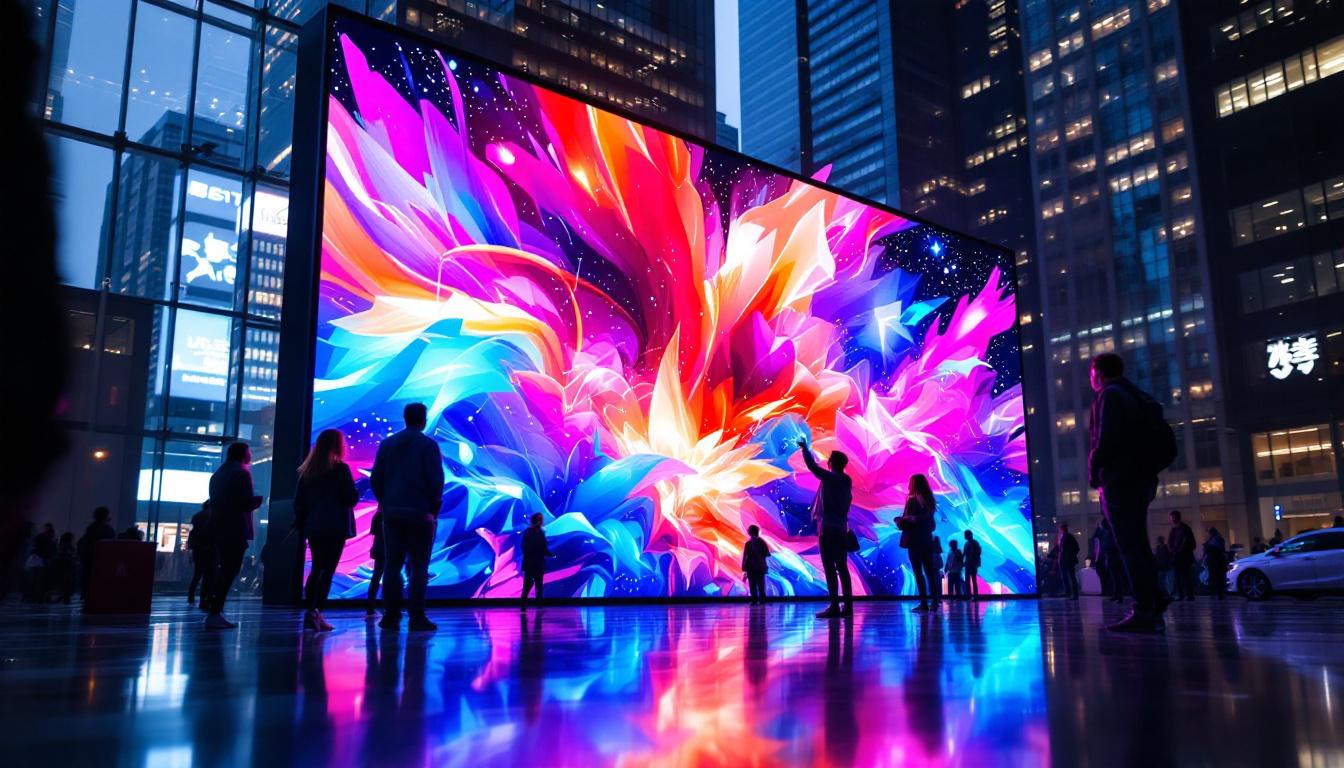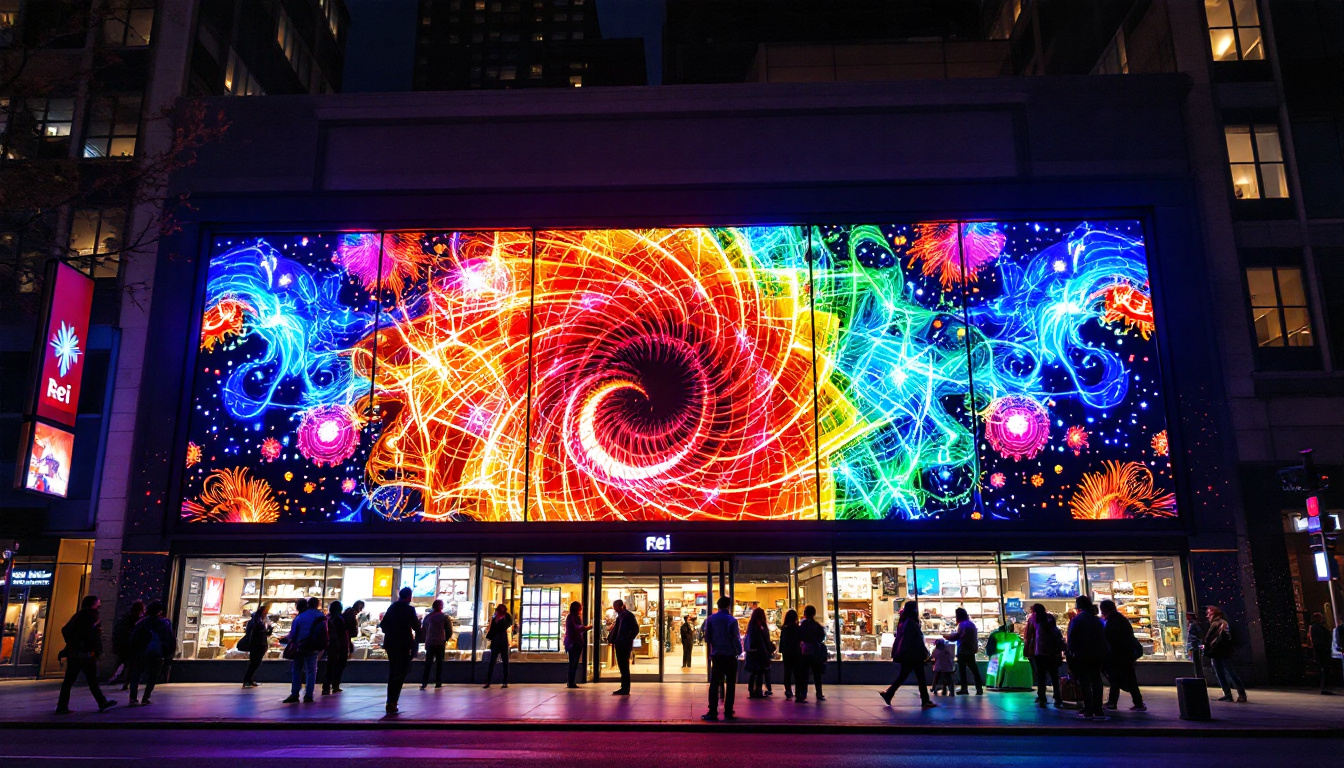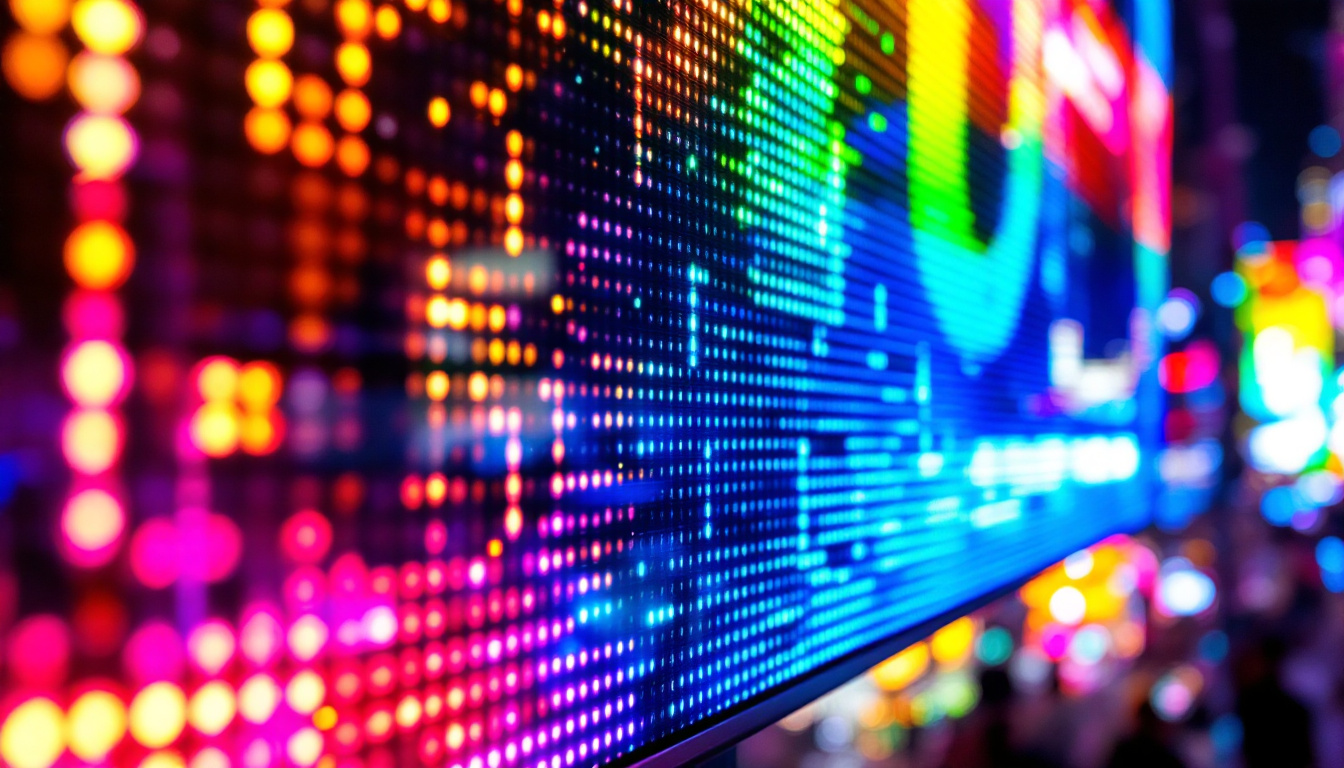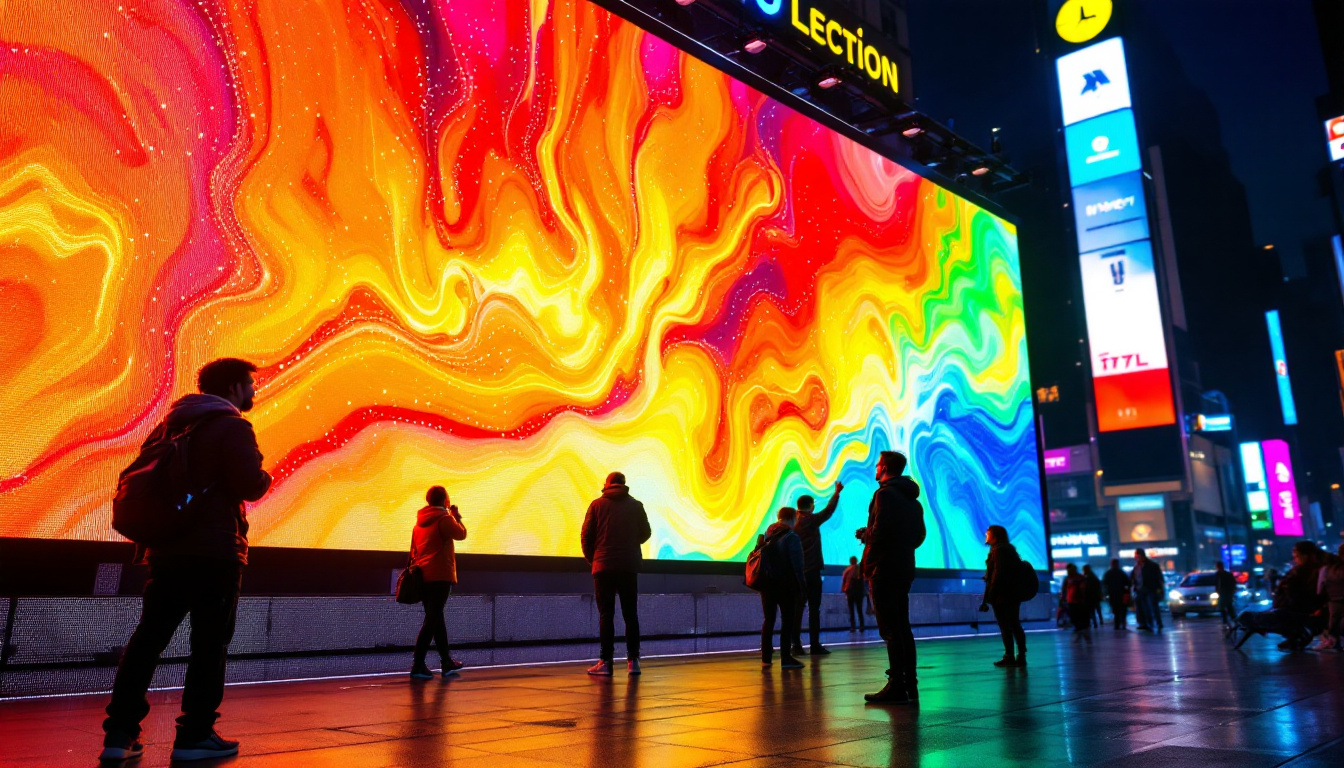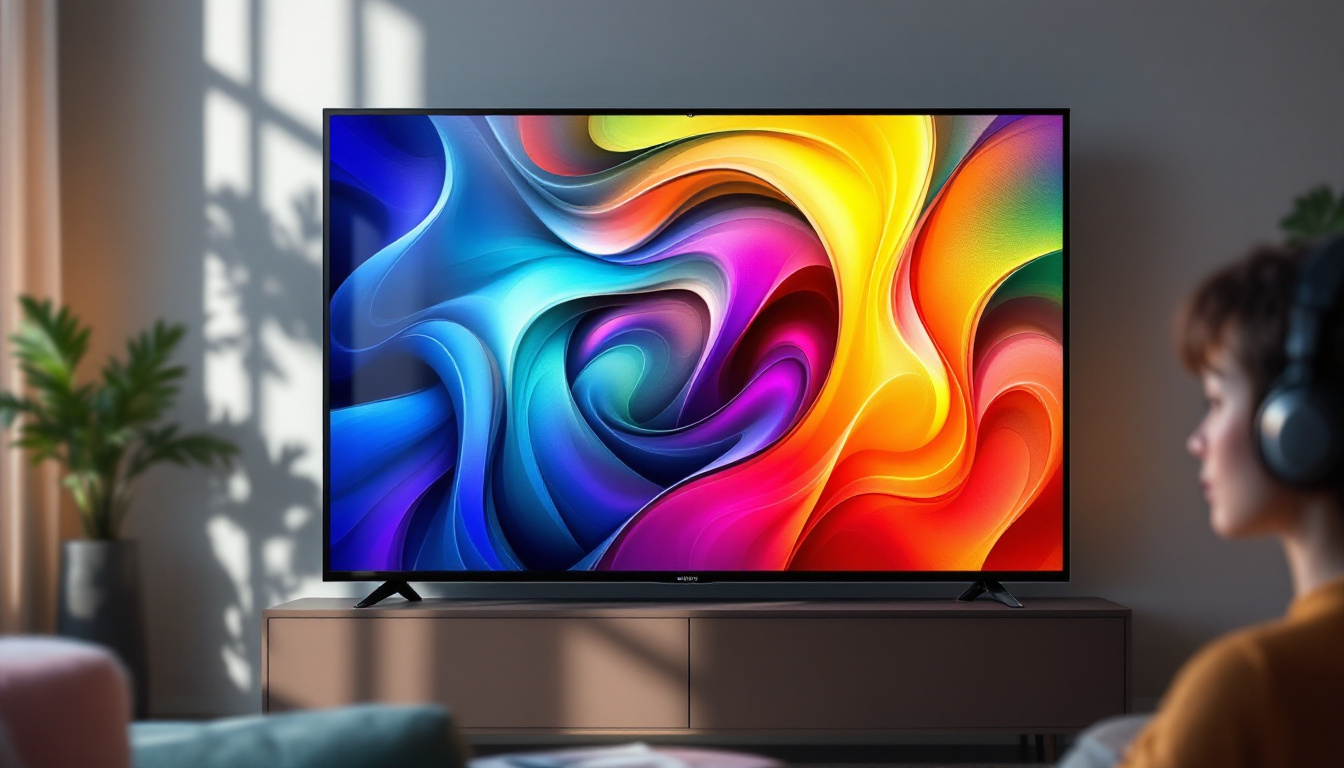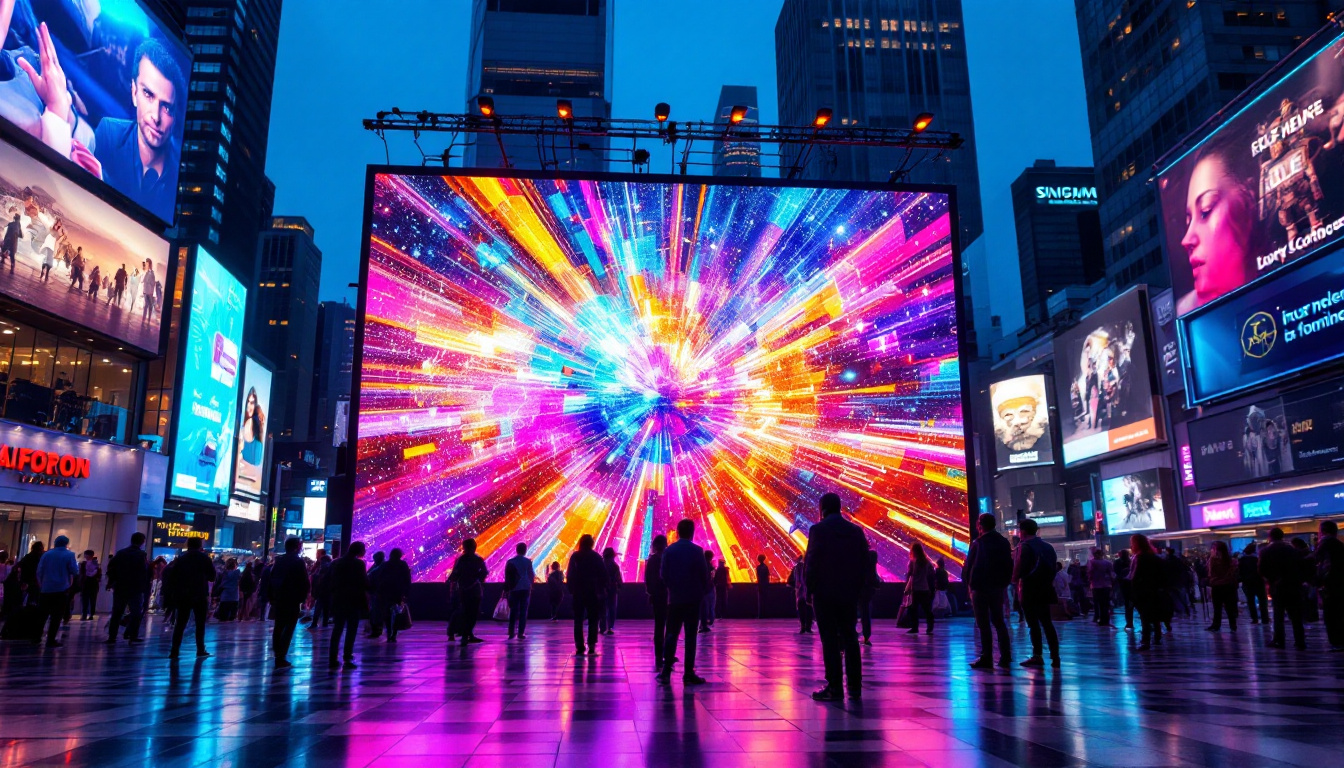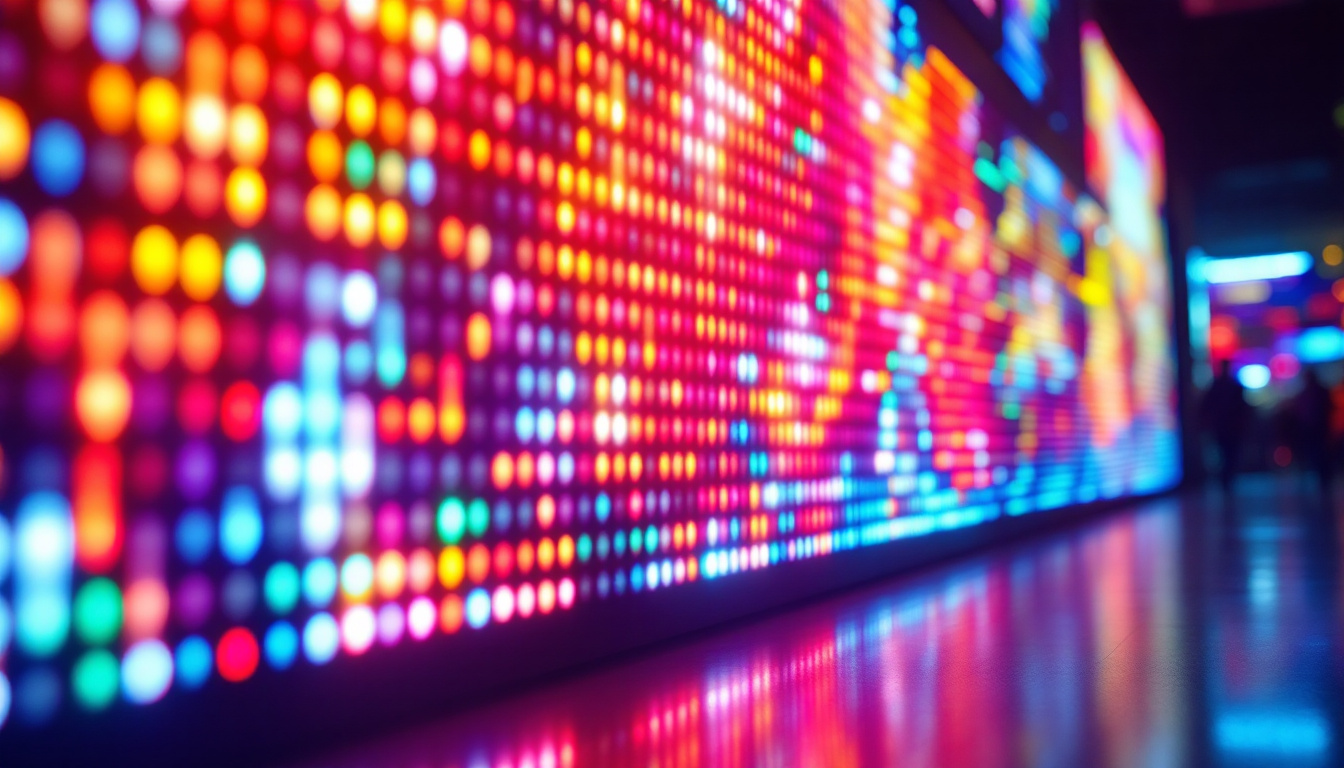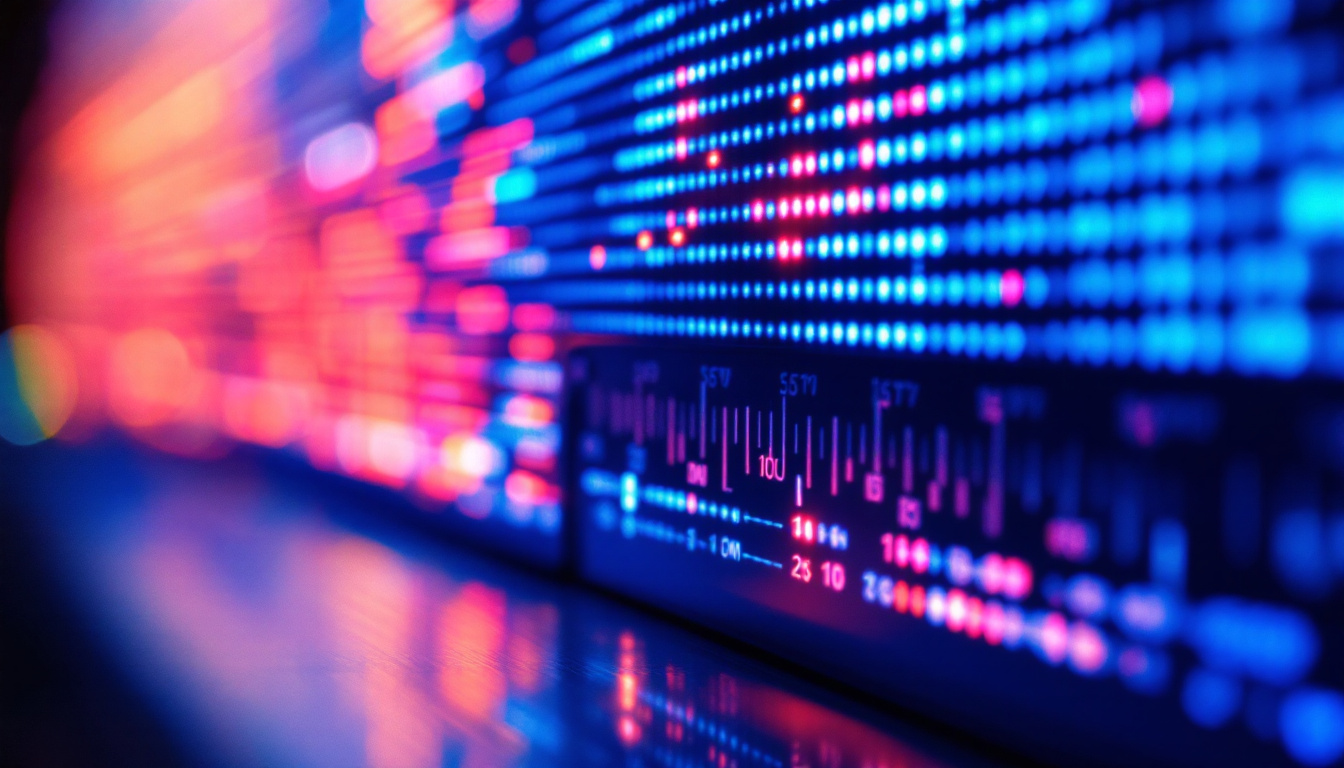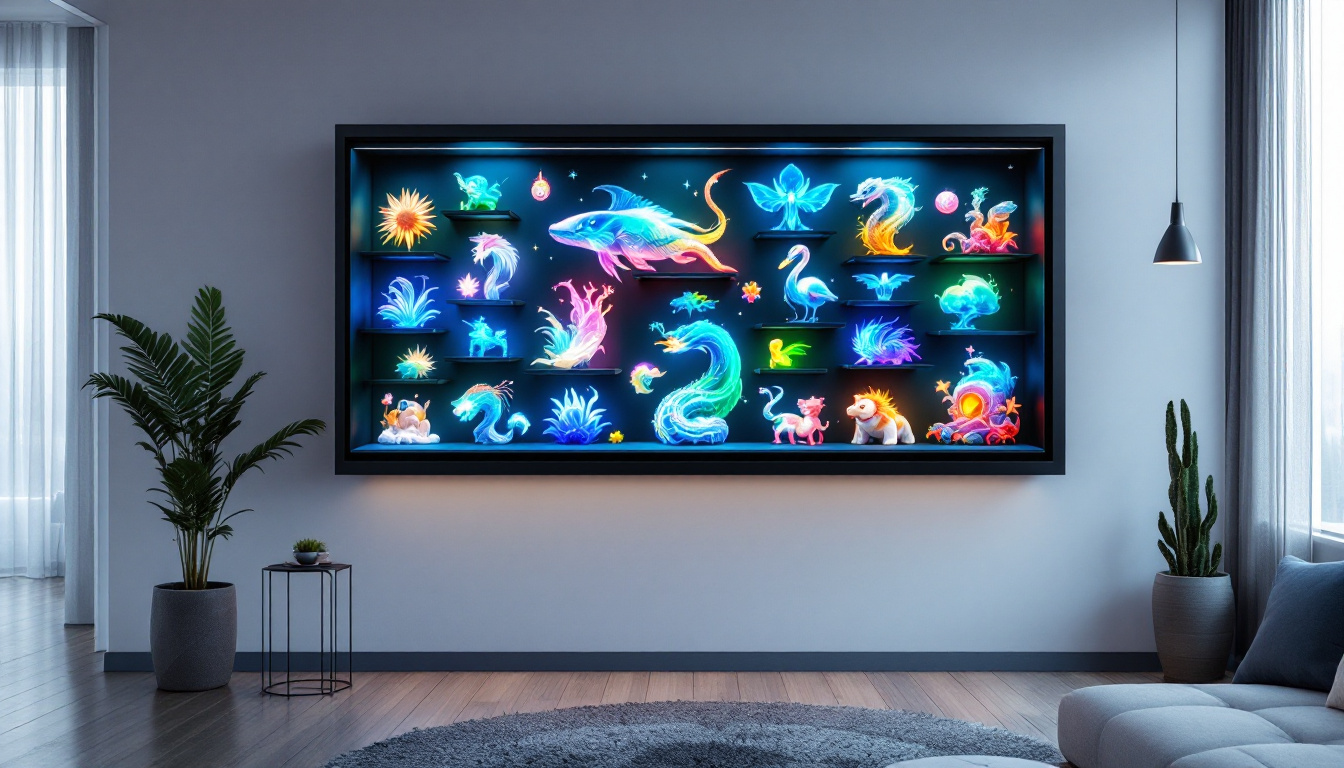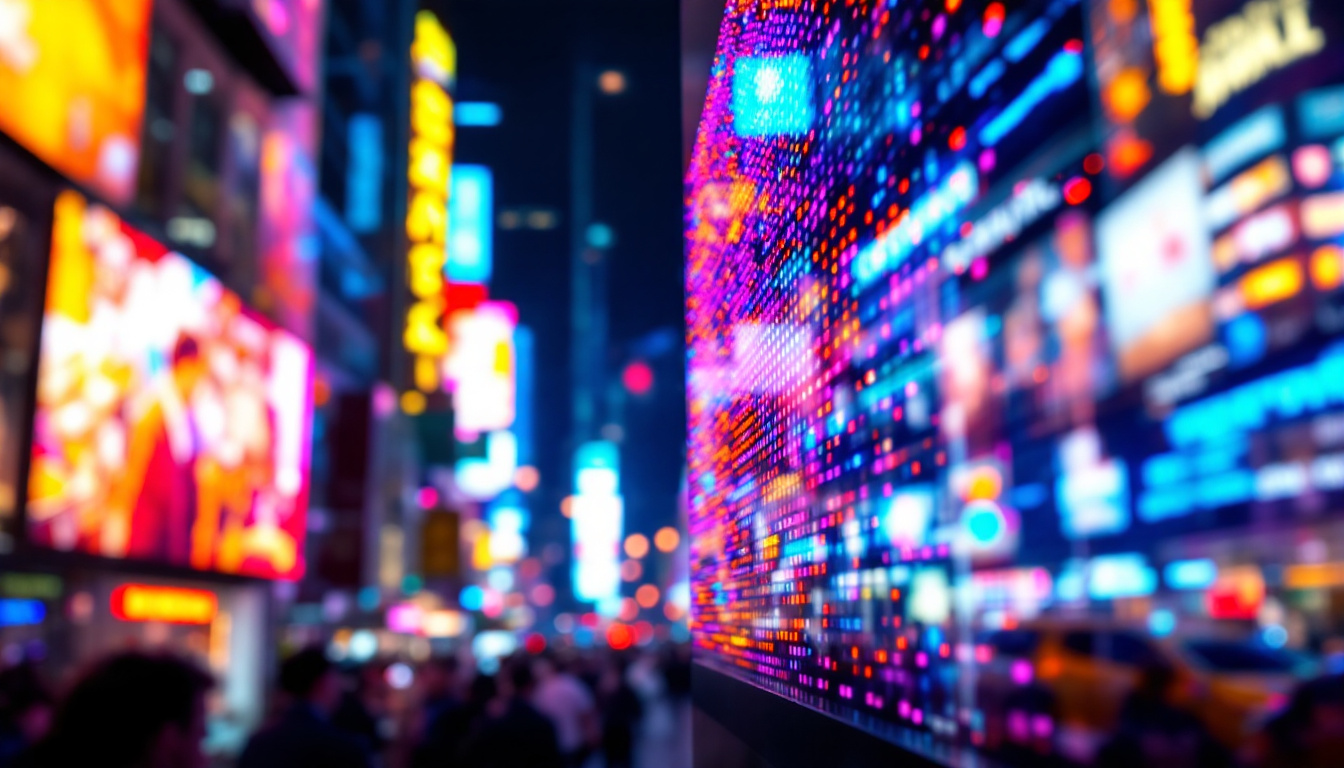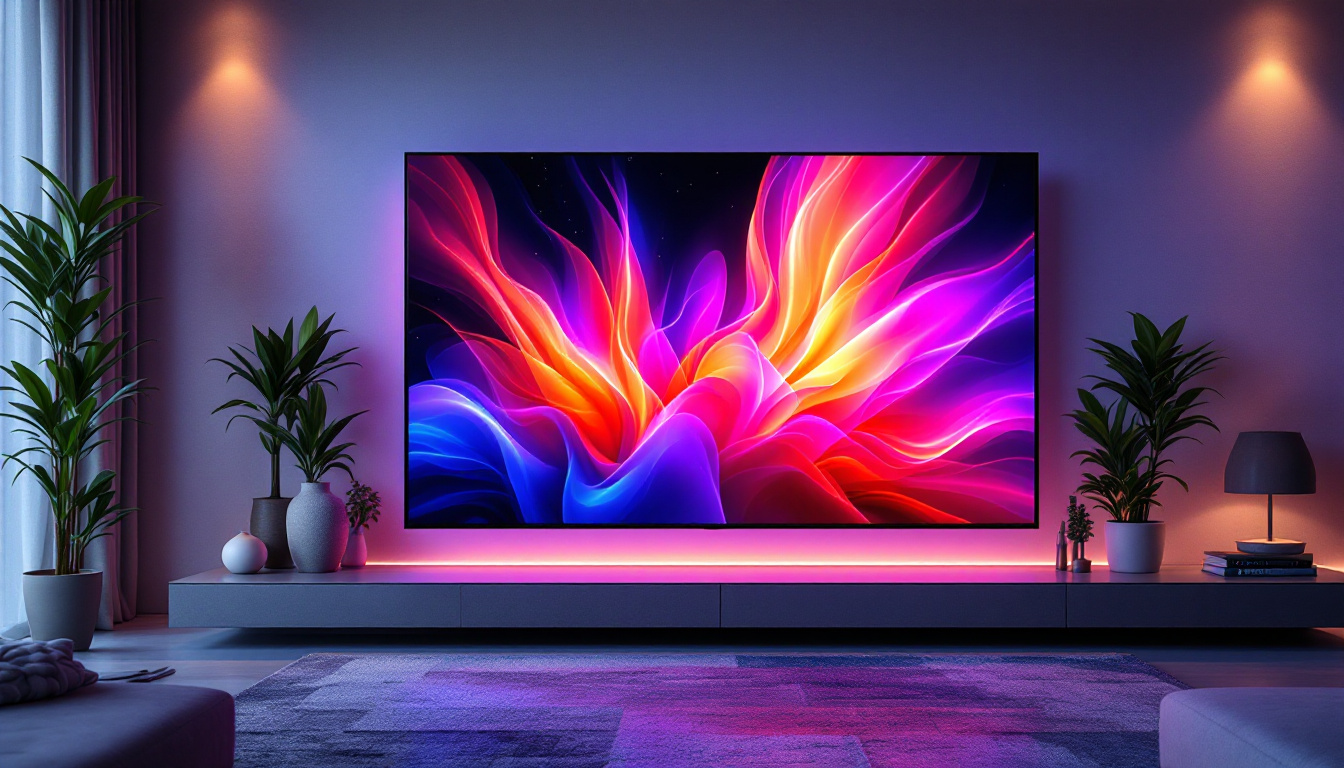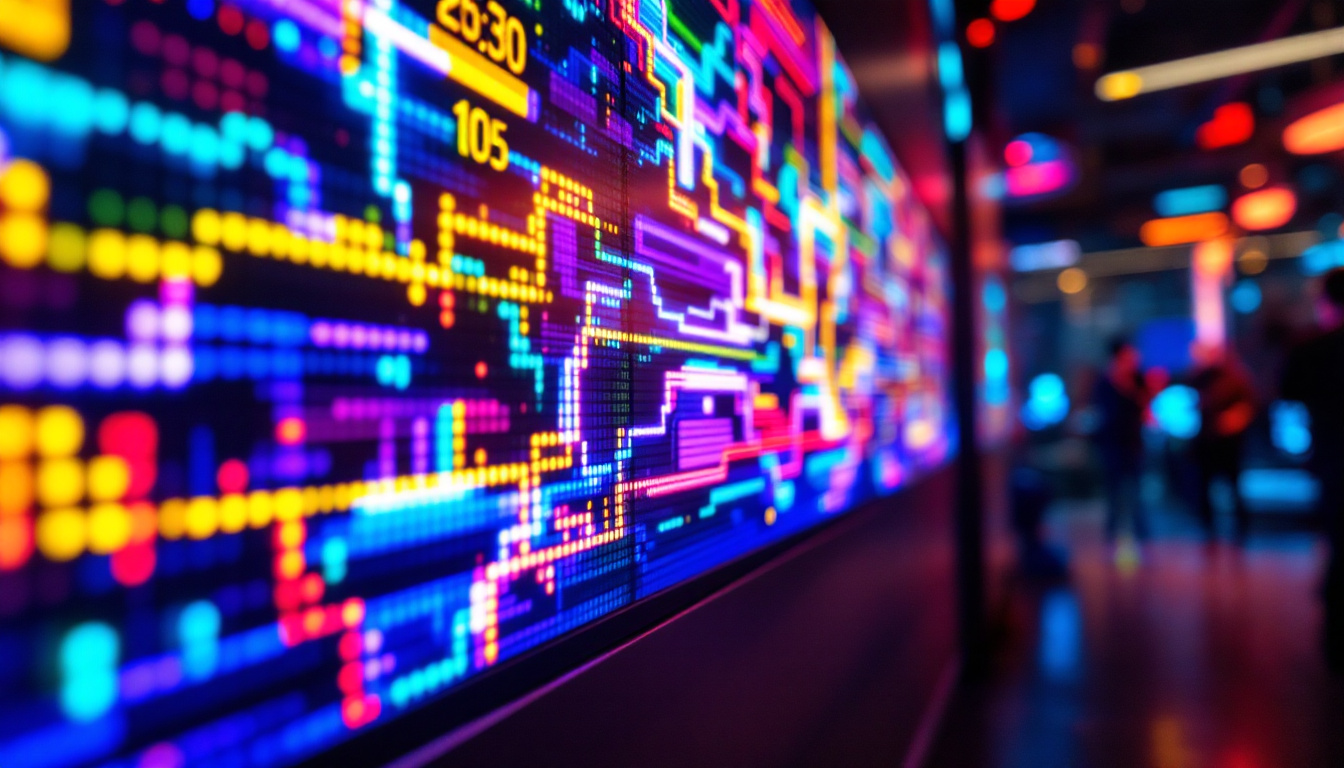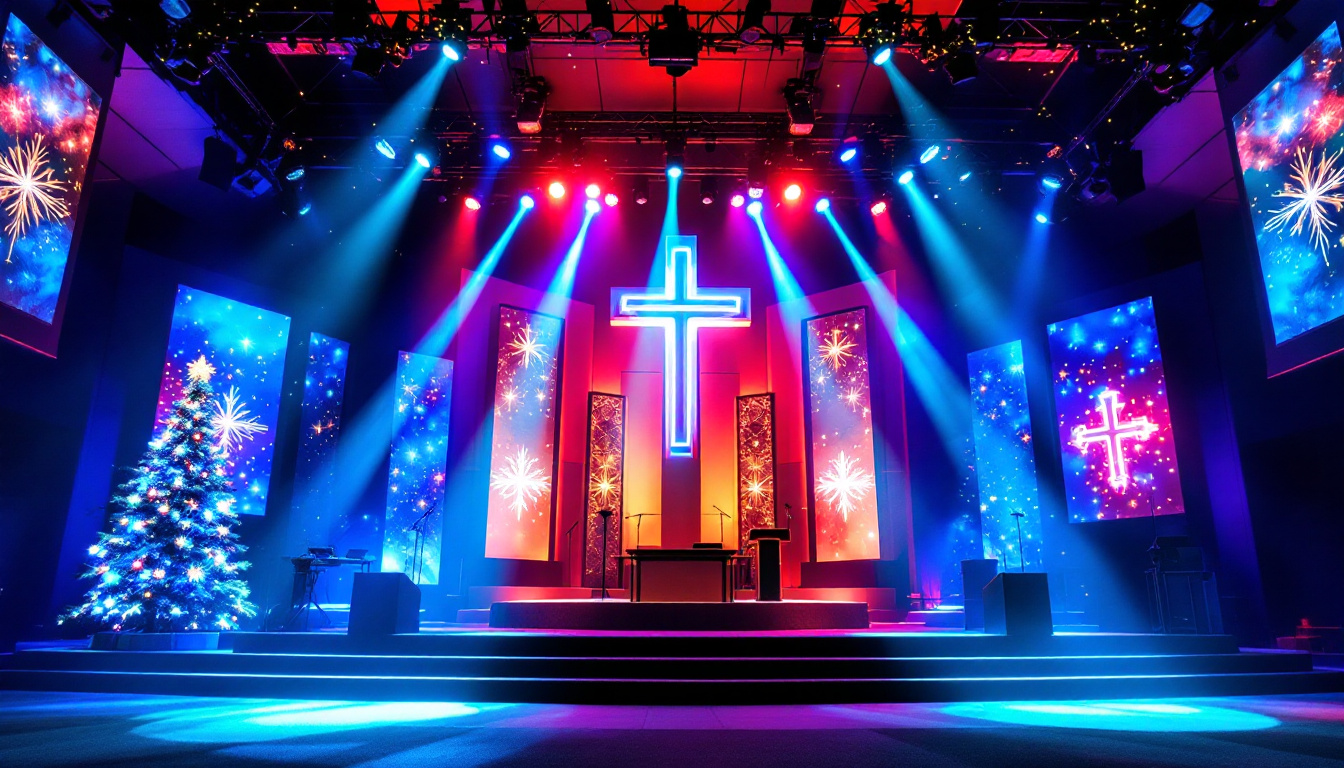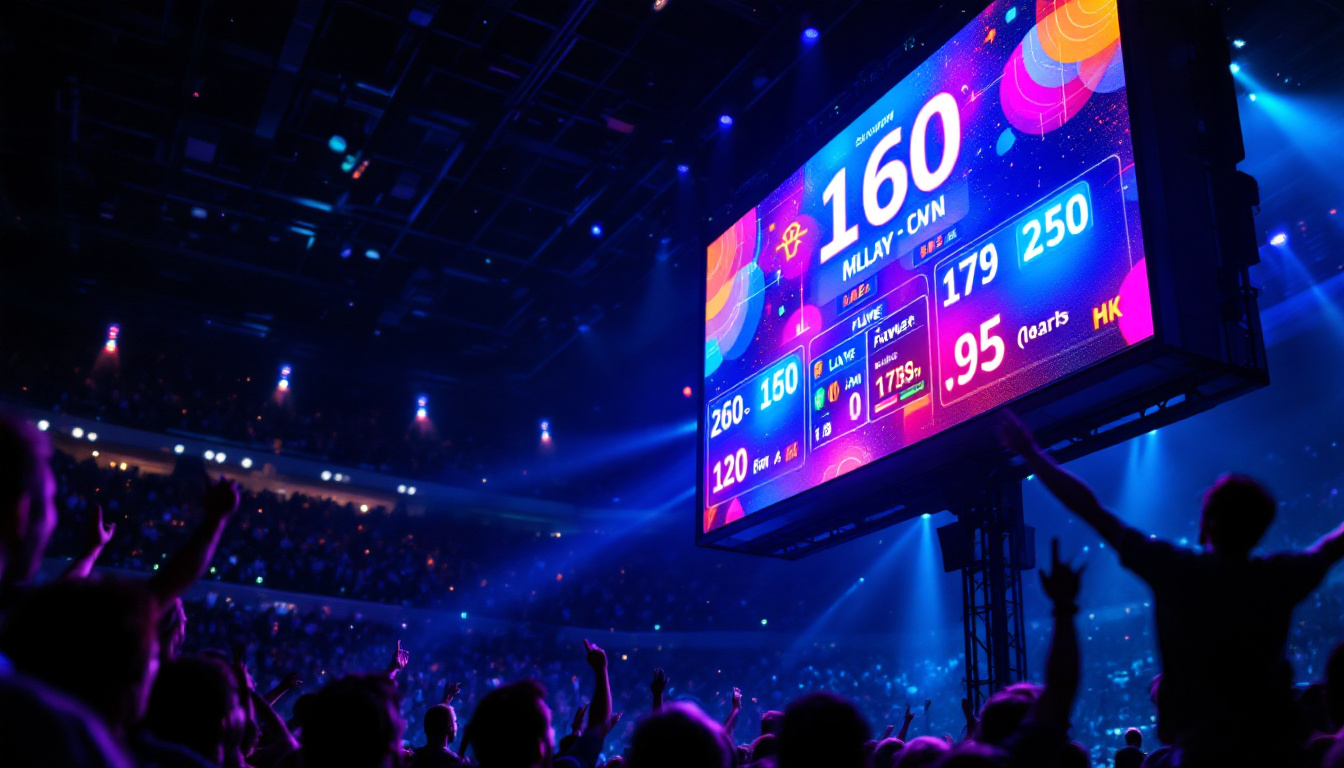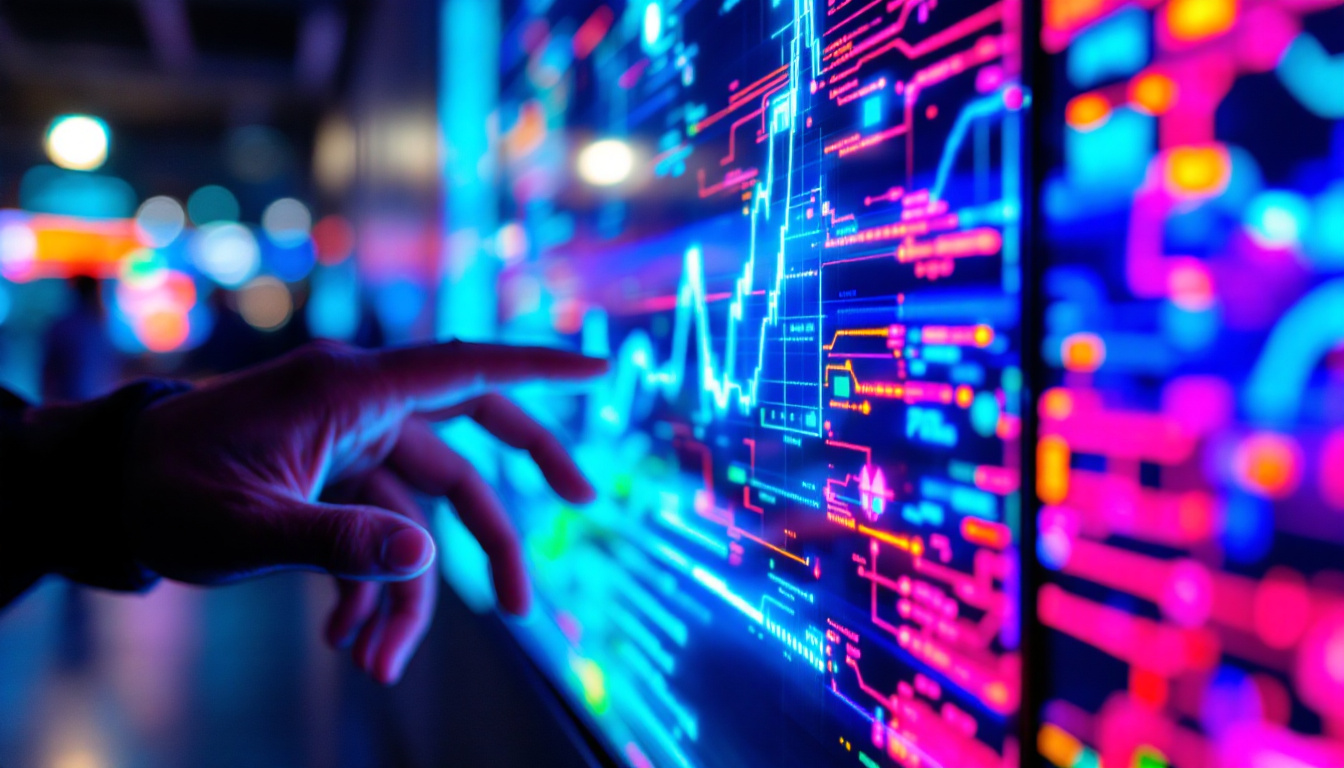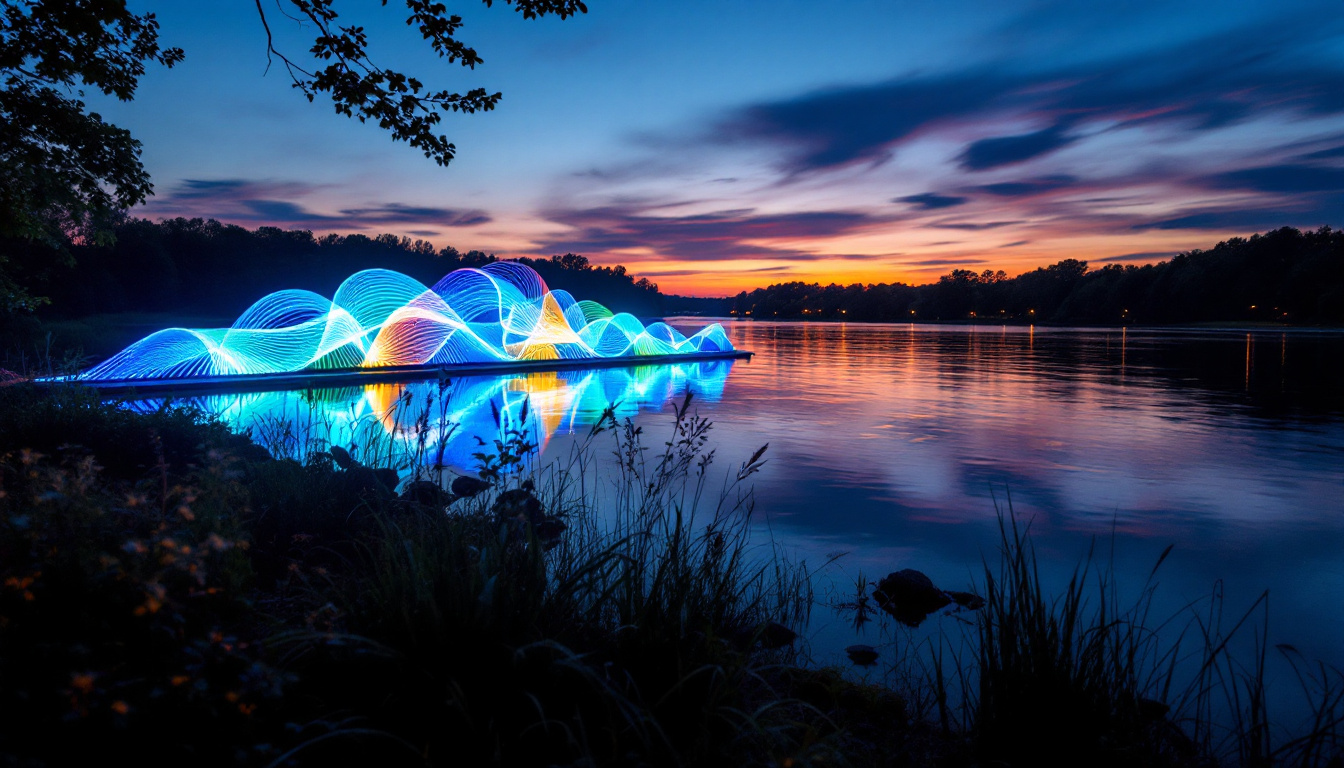In the digital age, large LED displays have become a ubiquitous part of our visual landscape. From towering billboards in Times Square to vibrant stadium screens and dynamic advertising panels in shopping malls, these displays captivate audiences with their brightness, clarity, and versatility. But what exactly are large LED displays, how do they work, and why have they become the preferred choice for outdoor and indoor digital signage? This article delves into the technology behind large LED displays, their advantages, applications, and the future trends shaping this dynamic industry.
Understanding Large LED Displays: The Basics
What Is an LED Display?
LED stands for Light Emitting Diode, a semiconductor device that emits light when an electric current passes through it. An LED display is a flat panel display that uses an array of LEDs as pixels to create images and videos. Unlike traditional LCD or plasma screens, LED displays use these tiny light sources directly, which allows for higher brightness and better visibility, especially in outdoor environments.
Large LED displays consist of thousands to millions of these tiny LEDs arranged in a grid pattern. Each LED or group of LEDs can be controlled individually to produce different colors and intensities, enabling the display of complex images, animations, and videos. The size of these displays can range from a few square feet to hundreds of square meters, making them ideal for large-scale advertising, entertainment, and informational purposes. In fact, many iconic landmarks and public spaces now feature massive LED displays that serve not only as advertising platforms but also as dynamic canvases for artistic expression and community engagement.
These displays are often seen in bustling urban environments, where they can capture the attention of passersby with vibrant colors and moving images. From Times Square in New York City to Shibuya Crossing in Tokyo, large LED displays have become integral to the visual landscape, creating a sense of excitement and energy that draws people in. Beyond advertising, they are also used in sports arenas to enhance the spectator experience, providing real-time statistics, instant replays, and immersive graphics that keep fans engaged throughout the event.
How Do Large LED Displays Work?
The core principle behind LED displays is the control of light emission by individual diodes. Each pixel on the display is made up of red, green, and blue LEDs (RGB), which combine to create a full spectrum of colors through varying brightness levels. This method is known as additive color mixing.
Control systems manage the timing and intensity of each LED, refreshing the display multiple times per second to create smooth motion and vibrant images. The resolution of an LED display depends on the pixel pitch—the distance between the centers of two adjacent pixels. A smaller pixel pitch means more pixels per square meter, resulting in higher resolution and finer image detail. This is particularly important in settings where viewers are close to the display, such as in retail environments or concert venues, where clarity and detail can significantly impact the audience’s experience.
Moreover, advancements in technology have led to the development of outdoor and indoor LED displays that are designed to withstand various environmental conditions. Outdoor displays are typically built with weather-resistant materials and enhanced brightness to combat sunlight, ensuring visibility at all times. Indoor displays, on the other hand, often prioritize color accuracy and resolution, making them perfect for corporate presentations, exhibitions, and live events. The versatility of LED technology allows for a wide range of applications, from digital billboards and signage to interactive installations that engage audiences in new and innovative ways.
Advantages of Large LED Displays
Brightness and Visibility
One of the most significant advantages of large LED displays is their exceptional brightness. LEDs can produce light intensities far beyond what LCD or projection systems can achieve, often exceeding 5,000 nits (a unit of luminance). This brightness ensures that content remains visible even in direct sunlight, making LED displays ideal for outdoor advertising and public information systems.
Additionally, LED displays offer wide viewing angles, ensuring that images remain clear and vibrant even when viewed from the side. This characteristic is essential for large public installations where audiences may be spread across wide areas.
Durability and Energy Efficiency
LEDs are solid-state devices, which means they are more robust and durable than other light sources such as fluorescent or incandescent bulbs. Large LED displays are engineered to withstand harsh weather conditions, including rain, wind, and extreme temperatures, making them suitable for long-term outdoor use.
Moreover, LEDs are energy-efficient, consuming significantly less power than traditional lighting technologies. This efficiency not only reduces operating costs but also aligns with sustainability goals, an increasingly important consideration for businesses and municipalities investing in digital signage.
Flexibility and Customization
Large LED displays can be customized in shape, size, and resolution to fit various applications. They can be curved, transparent, or even flexible, allowing for innovative architectural integrations. Content can be updated in real time, enabling dynamic advertising campaigns, live event broadcasting, or emergency notifications.
This flexibility extends to pixel pitch options, which can be selected based on viewing distance and desired image quality. For example, stadium screens often use larger pixel pitches since viewers are far away, whereas indoor displays require finer pitches for close-up viewing.
Applications of Large LED Displays
Outdoor Advertising and Digital Billboards
Outdoor advertising is one of the most prominent applications of large LED displays. Digital billboards have revolutionized the advertising industry by allowing advertisers to change messages instantly and display multiple ads on the same screen throughout the day. According to a 2023 report by the Digital Signage Federation, digital out-of-home advertising revenue in the United States surpassed $3 billion, with LED billboards accounting for a significant portion.
These displays are strategically placed in high-traffic areas such as highways, city centers, and shopping districts to maximize visibility and engagement. Their brightness and dynamic content capabilities make them far more effective than static billboards.
Sports Arenas and Entertainment Venues
Large LED displays are integral to modern sports and entertainment venues. They provide live game scores, instant replays, advertisements, and interactive content that enhance the spectator experience. For example, the LED screens at the AT&T Stadium in Texas cover over 11,000 square feet and are among the largest high-definition displays in the world.
Beyond sports, concert halls and theaters use LED walls for immersive stage backdrops and visual effects, creating memorable experiences for audiences.
Transportation and Public Information Systems
LED displays play a crucial role in transportation hubs such as airports, train stations, and bus terminals. They provide real-time updates on arrivals, departures, delays, and safety information. Their high visibility and reliability make them indispensable for managing large crowds and ensuring smooth operations.
Smart city initiatives increasingly incorporate LED displays to communicate public service announcements, weather alerts, and community news, contributing to more connected and informed urban environments.
Technical Considerations When Choosing Large LED Displays
Pixel Pitch and Resolution
Choosing the right pixel pitch is essential for achieving optimal image quality. For outdoor displays viewed from a distance of 10 meters or more, a pixel pitch of 10mm to 20mm is common. Indoor displays, where viewers are closer, often require pitches as small as 1mm to 4mm.
Higher resolution displays with smaller pixel pitches provide sharper images but come at a higher cost and increased power consumption. Balancing resolution with viewing distance and budget is critical for effective deployment.
Brightness and Contrast Ratio
Brightness levels must be tailored to the installation environment. Outdoor displays typically require brightness levels above 5,000 nits to remain visible in sunlight, while indoor displays can operate effectively at 800 to 1,500 nits.
Contrast ratio, which measures the difference between the darkest black and brightest white, affects image depth and clarity. High contrast ratios improve readability and visual appeal, especially for text and detailed graphics.
Refresh Rate and Color Accuracy
The refresh rate, measured in hertz (Hz), indicates how many times per second the display updates its image. Higher refresh rates (above 1,000 Hz) reduce flicker and improve the quality of video playback, which is particularly important for live broadcasts and fast-moving content.
Color accuracy ensures that images appear natural and consistent. Advanced calibration and high-quality LEDs contribute to better color reproduction, enhancing the overall viewing experience.
The Future of Large LED Displays
Innovations in LED Technology
Recent advancements in microLED technology promise even greater brightness, energy efficiency, and pixel density. MicroLEDs are smaller than traditional LEDs, allowing for ultra-high-resolution displays with superior contrast and color performance. Although currently expensive, microLED displays are expected to become more affordable and widespread in the coming years.
Additionally, transparent and flexible LED displays are opening new possibilities for architectural integration and creative advertising solutions. These innovations enable displays to blend seamlessly into glass facades or wrap around curved surfaces, creating immersive environments.
Integration with Smart Technologies
The integration of LED displays with Internet of Things (IoT) platforms and artificial intelligence (AI) is transforming how content is managed and delivered. Smart LED displays can adapt content based on audience demographics, weather conditions, or real-time events, maximizing engagement and relevance.
Furthermore, augmented reality (AR) and interactive capabilities are being incorporated into LED displays, allowing users to engage directly with the content via smartphones or gesture recognition, enhancing interactivity and user experience.
Sustainability and Environmental Impact
As environmental concerns grow, manufacturers and operators are focusing on reducing the carbon footprint of large LED displays. Innovations in low-power LEDs, recyclable materials, and energy-efficient control systems contribute to greener digital signage solutions.
Many cities now require digital billboards to meet strict energy and light pollution standards, encouraging the adoption of eco-friendly technologies and responsible usage.
Conclusion
Large LED displays have revolutionized visual communication by offering unparalleled brightness, flexibility, and durability. Their applications span advertising, entertainment, transportation, and public information, making them indispensable in modern urban environments. Understanding the technical aspects such as pixel pitch, brightness, and refresh rate is crucial for selecting the right display for specific needs.
With ongoing innovations in microLED technology, smart integration, and sustainability efforts, the future of large LED displays looks brighter than ever. Businesses and municipalities investing in these cutting-edge displays can expect to captivate audiences, deliver dynamic content, and contribute to more connected and visually engaging spaces.
Whether illuminating a city skyline or enhancing a live event, large LED displays continue to shape the way people experience information and entertainment worldwide.
Discover the Future of Visual Communication with LumenMatrix
As you’ve seen, large LED displays are transforming the way we connect and communicate in the digital world. If you’re ready to elevate your visual presence and captivate your audience with the latest in LED display technology, look no further than LumenMatrix. Our comprehensive range of solutions, from Indoor and Outdoor LED Wall Displays to innovative LED Sports and Transparent Displays, are designed to meet the diverse needs of any business or event. Experience the future of visual engagement with LumenMatrix and let us help you make a lasting impression. Check out LumenMatrix LED Display Solutions today and join the revolution in digital signage excellence.

